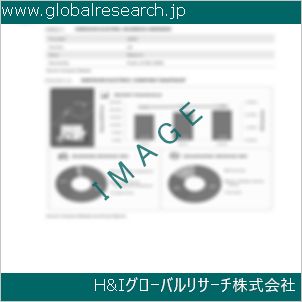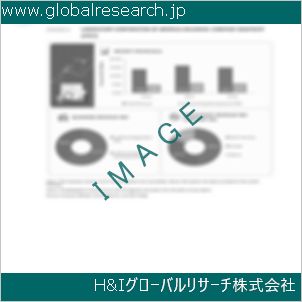1 Biomedical Optical Fiber Sensor Market Overview
1.1 Product Definition
1.2 Biomedical Optical Fiber Sensor Segment by Type
1.2.1 Global Biomedical Optical Fiber Sensor Market Value Growth Rate Analysis by Type 2022 VS 2029
1.2.2 Fiber Optic Temperature Sensors
1.2.3 Fiber Optic Pressure Sensors
1.3 Biomedical Optical Fiber Sensor Segment by Application
1.3.1 Global Biomedical Optical Fiber Sensor Market Value Growth Rate Analysis by Application: 2022 VS 2029
1.3.2 Endoscopes
1.3.3 Dental Lights
1.3.4 Others
1.4 Global Market Growth Prospects
1.4.1 Global Biomedical Optical Fiber Sensor Production Value Estimates and Forecasts (2018-2029)
1.4.2 Global Biomedical Optical Fiber Sensor Production Capacity Estimates and Forecasts (2018-2029)
1.4.3 Global Biomedical Optical Fiber Sensor Production Estimates and Forecasts (2018-2029)
1.4.4 Global Biomedical Optical Fiber Sensor Market Average Price Estimates and Forecasts (2018-2029)
1.5 Assumptions and Limitations
2 Market Competition by Manufacturers
2.1 Global Biomedical Optical Fiber Sensor Production Market Share by Manufacturers (2018-2023)
2.2 Global Biomedical Optical Fiber Sensor Production Value Market Share by Manufacturers (2018-2023)
2.3 Global Key Players of Biomedical Optical Fiber Sensor, Industry Ranking, 2021 VS 2022 VS 2023
2.4 Global Biomedical Optical Fiber Sensor Market Share by Company Type (Tier 1, Tier 2 and Tier 3)
2.5 Global Biomedical Optical Fiber Sensor Average Price by Manufacturers (2018-2023)
2.6 Global Key Manufacturers of Biomedical Optical Fiber Sensor, Manufacturing Base Distribution and Headquarters
2.7 Global Key Manufacturers of Biomedical Optical Fiber Sensor, Product Offered and Application
2.8 Global Key Manufacturers of Biomedical Optical Fiber Sensor, Date of Enter into This Industry
2.9 Biomedical Optical Fiber Sensor Market Competitive Situation and Trends
2.9.1 Biomedical Optical Fiber Sensor Market Concentration Rate
2.9.2 Global 5 and 10 Largest Biomedical Optical Fiber Sensor Players Market Share by Revenue
2.10 Mergers & Acquisitions, Expansion
3 Biomedical Optical Fiber Sensor Production by Region
3.1 Global Biomedical Optical Fiber Sensor Production Value Estimates and Forecasts by Region: 2018 VS 2022 VS 2029
3.2 Global Biomedical Optical Fiber Sensor Production Value by Region (2018-2029)
3.2.1 Global Biomedical Optical Fiber Sensor Production Value Market Share by Region (2018-2023)
3.2.2 Global Forecasted Production Value of Biomedical Optical Fiber Sensor by Region (2024-2029)
3.3 Global Biomedical Optical Fiber Sensor Production Estimates and Forecasts by Region: 2018 VS 2022 VS 2029
3.4 Global Biomedical Optical Fiber Sensor Production by Region (2018-2029)
3.4.1 Global Biomedical Optical Fiber Sensor Production Market Share by Region (2018-2023)
3.4.2 Global Forecasted Production of Biomedical Optical Fiber Sensor by Region (2024-2029)
3.5 Global Biomedical Optical Fiber Sensor Market Price Analysis by Region (2018-2023)
3.6 Global Biomedical Optical Fiber Sensor Production and Value, Year-over-Year Growth
3.6.1 North America Biomedical Optical Fiber Sensor Production Value Estimates and Forecasts (2018-2029)
3.6.2 Europe Biomedical Optical Fiber Sensor Production Value Estimates and Forecasts (2018-2029)
3.6.3 China Biomedical Optical Fiber Sensor Production Value Estimates and Forecasts (2018-2029)
3.6.4 Japan Biomedical Optical Fiber Sensor Production Value Estimates and Forecasts (2018-2029)
3.6.5 South Korea Biomedical Optical Fiber Sensor Production Value Estimates and Forecasts (2018-2029)
4 Biomedical Optical Fiber Sensor Consumption by Region
4.1 Global Biomedical Optical Fiber Sensor Consumption Estimates and Forecasts by Region: 2018 VS 2022 VS 2029
4.2 Global Biomedical Optical Fiber Sensor Consumption by Region (2018-2029)
4.2.1 Global Biomedical Optical Fiber Sensor Consumption by Region (2018-2023)
4.2.2 Global Biomedical Optical Fiber Sensor Forecasted Consumption by Region (2024-2029)
4.3 North America
4.3.1 North America Biomedical Optical Fiber Sensor Consumption Growth Rate by Country: 2018 VS 2022 VS 2029
4.3.2 North America Biomedical Optical Fiber Sensor Consumption by Country (2018-2029)
4.3.3 U.S.
4.3.4 Canada
4.4 Europe
4.4.1 Europe Biomedical Optical Fiber Sensor Consumption Growth Rate by Country: 2018 VS 2022 VS 2029
4.4.2 Europe Biomedical Optical Fiber Sensor Consumption by Country (2018-2029)
4.4.3 Germany
4.4.4 France
4.4.5 U.K.
4.4.6 Italy
4.4.7 Russia
4.5 Asia Pacific
4.5.1 Asia Pacific Biomedical Optical Fiber Sensor Consumption Growth Rate by Region: 2018 VS 2022 VS 2029
4.5.2 Asia Pacific Biomedical Optical Fiber Sensor Consumption by Region (2018-2029)
4.5.3 China
4.5.4 Japan
4.5.5 South Korea
4.5.6 China Taiwan
4.5.7 Southeast Asia
4.5.8 India
4.6 Latin America, Middle East & Africa
4.6.1 Latin America, Middle East & Africa Biomedical Optical Fiber Sensor Consumption Growth Rate by Country: 2018 VS 2022 VS 2029
4.6.2 Latin America, Middle East & Africa Biomedical Optical Fiber Sensor Consumption by Country (2018-2029)
4.6.3 Mexico
4.6.4 Brazil
4.6.5 Turkey
5 Segment by Type
5.1 Global Biomedical Optical Fiber Sensor Production by Type (2018-2029)
5.1.1 Global Biomedical Optical Fiber Sensor Production by Type (2018-2023)
5.1.2 Global Biomedical Optical Fiber Sensor Production by Type (2024-2029)
5.1.3 Global Biomedical Optical Fiber Sensor Production Market Share by Type (2018-2029)
5.2 Global Biomedical Optical Fiber Sensor Production Value by Type (2018-2029)
5.2.1 Global Biomedical Optical Fiber Sensor Production Value by Type (2018-2023)
5.2.2 Global Biomedical Optical Fiber Sensor Production Value by Type (2024-2029)
5.2.3 Global Biomedical Optical Fiber Sensor Production Value Market Share by Type (2018-2029)
5.3 Global Biomedical Optical Fiber Sensor Price by Type (2018-2029)
6 Segment by Application
6.1 Global Biomedical Optical Fiber Sensor Production by Application (2018-2029)
6.1.1 Global Biomedical Optical Fiber Sensor Production by Application (2018-2023)
6.1.2 Global Biomedical Optical Fiber Sensor Production by Application (2024-2029)
6.1.3 Global Biomedical Optical Fiber Sensor Production Market Share by Application (2018-2029)
6.2 Global Biomedical Optical Fiber Sensor Production Value by Application (2018-2029)
6.2.1 Global Biomedical Optical Fiber Sensor Production Value by Application (2018-2023)
6.2.2 Global Biomedical Optical Fiber Sensor Production Value by Application (2024-2029)
6.2.3 Global Biomedical Optical Fiber Sensor Production Value Market Share by Application (2018-2029)
6.3 Global Biomedical Optical Fiber Sensor Price by Application (2018-2029)
7 Key Companies Profiled
7.1 Resonetics
7.1.1 Resonetics Biomedical Optical Fiber Sensor Corporation Information
7.1.2 Resonetics Biomedical Optical Fiber Sensor Product Portfolio
7.1.3 Resonetics Biomedical Optical Fiber Sensor Production, Value, Price and Gross Margin (2018-2023)
7.1.4 Resonetics Main Business and Markets Served
7.1.5 Resonetics Recent Developments/Updates
7.2 Opsens Solutions
7.2.1 Opsens Solutions Biomedical Optical Fiber Sensor Corporation Information
7.2.2 Opsens Solutions Biomedical Optical Fiber Sensor Product Portfolio
7.2.3 Opsens Solutions Biomedical Optical Fiber Sensor Production, Value, Price and Gross Margin (2018-2023)
7.2.4 Opsens Solutions Main Business and Markets Served
7.2.5 Opsens Solutions Recent Developments/Updates
7.3 FBGS
7.3.1 FBGS Biomedical Optical Fiber Sensor Corporation Information
7.3.2 FBGS Biomedical Optical Fiber Sensor Product Portfolio
7.3.3 FBGS Biomedical Optical Fiber Sensor Production, Value, Price and Gross Margin (2018-2023)
7.3.4 FBGS Main Business and Markets Served
7.3.5 FBGS Recent Developments/Updates
8 Industry Chain and Sales Channels Analysis
8.1 Biomedical Optical Fiber Sensor Industry Chain Analysis
8.2 Biomedical Optical Fiber Sensor Key Raw Materials
8.2.1 Key Raw Materials
8.2.2 Raw Materials Key Suppliers
8.3 Biomedical Optical Fiber Sensor Production Mode & Process
8.4 Biomedical Optical Fiber Sensor Sales and Marketing
8.4.1 Biomedical Optical Fiber Sensor Sales Channels
8.4.2 Biomedical Optical Fiber Sensor Distributors
8.5 Biomedical Optical Fiber Sensor Customers
9 Biomedical Optical Fiber Sensor Market Dynamics
9.1 Biomedical Optical Fiber Sensor Industry Trends
9.2 Biomedical Optical Fiber Sensor Market Drivers
9.3 Biomedical Optical Fiber Sensor Market Challenges
9.4 Biomedical Optical Fiber Sensor Market Restraints
10 Research Finding and Conclusion
11 Methodology and Data Source
11.1 Methodology/Research Approach
11.1.1 Research Programs/Design
11.1.2 Market Size Estimation
11.1.3 Market Breakdown and Data Triangulation
11.2 Data Source
11.2.1 Secondary Sources
11.2.2 Primary Sources
11.3 Author List
11.4 Disclaimer
| ※参考情報 生体用光ファイバーセンサーは、光ファイバーを利用して生体信号を測定し、解析するための高機能なセンサーです。この技術は、生体情報をリアルタイムでモニタリングし、診断や治療に役立てることを目的としています。 光ファイバーセンサーの基本的な定義としては、光ファイバーを用いたセンサーが、特定の物理量(例えば、温度、圧力、ストレイン、化学物質濃度など)を測定し、それを光信号に変換する装置を指します。これにより、個々の生体状況を一層詳しく、かつコンパクトに観察することが可能となります。 生体用光ファイバーセンサーの主な特徴には、高感度、リアルタイムモニタリング、小型化、生体適合性、非侵襲性などがあります。特に生体適合性は、生体内で使用されるため重要な要素であり、光ファイバー素材は一般的に生体に対する反応が少ないため、体内での使用に適しています。また、非侵襲性は、患者に対する負担を軽減するものであり、これは患者の快適性を考慮した重要なポイントです。 このセンサーは主にいくつかの種類に分類できます。まず、温度センサー。光ファイバーの温度変化に基づいて生体内の温度を測定します。次に、圧力センサー。体内の圧力変化をリアルタイムで把握するために使用されます。また、化学センサーも重要で、特定のバイオマーカーや薬物の濃度を測定するのに適しています。さらに、光ファイバーを使用した画像診断技術も進化を遂げており、内視鏡などで生体内部の情報を直接取得することが可能です。 生体用光ファイバーセンサーの用途は多岐にわたります。例えば、心拍数や血圧のモニタリング、血糖値の測定、病気の早期発見や診断などが挙げられます。これらの用途において、光ファイバーセンサーはコンパクトで持ち運びやすく、医療機器としての応用において非常に有用です。また、実験室の研究でも、様々な生物学的反応をリアルタイムで観察するためのツールとして広く利用されています。 さらに、関連技術としては、光学技術やナノテクノロジー、エレクトロニクスがあります。光学技術は、光の性質を利用した測定方法を提供し、センサーの性能を向上させます。また、ナノテクノロジーの進展により、より小型で高感度なセンサーが開発され、多様な生体情報を正確に取得できるようになっています。エレクトロニクスの分野も重要であり、信号処理やデータ解析技術の発展が、生体用光ファイバーセンサーのデータ処理能力の向上に寄与しています。 最近では、Wearable Technology(ウェアラブル技術)の発展に伴い、光ファイバーセンサーは体外でも使用されるようになっています。これにより、常時健康状態をモニタリングすることが可能となり、個人の健康管理においても重要な役割を果たすようになっています。たとえば、スポーツ選手のパフォーマンス分析や高齢者の健康管理において有用です。 生体用光ファイバーセンサーの今後の展望としては、さらに高精度化・高機能化が期待されます。特に、AI技術との融合により、データの解析・予測がより高度になることで、生体モニタリングの精度が向上すると考えられます。また、個別化医療が進む中で、患者一人ひとりに合ったモニタリングが可能になるような技術の開発が期待されています。 以上のように、生体用光ファイバーセンサーは、医療分野だけでなく、さまざまな分野において非常に重要な技術となっています。生体情報をリアルタイムで収集・分析できるこの技術は、今後も進化を続け、より多くの人々の健康管理や病気の予防に寄与することでしょう。 |
❖ 免責事項 ❖
http://www.globalresearch.jp/disclaimer












